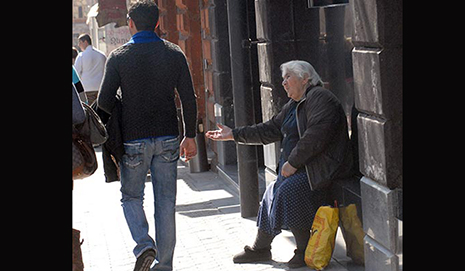The NSS report shows that the level of poverty has slightly dropped as compared to last year (2012), from 35 to 32.4 percent. The survey covered 5,184 households in 37 urban and 192 rural communities across Armenia with the World Bank`s assessment methodology and financed from the State Budget.
Diana Martirosyan, heading the NSS department of household research, told the press during Tuesday presentation of the report that those are assessed as poor whose food-energy intake versus income per one adult is lower that the highest general poverty line (37,044 drams; $92.20), very poor – lower than the lowest general poverty line (30,547 drams; $76), and extremely poor –lower than the food or extreme line (21,732; $54.10).
“Despite the fact that in 2012, as compared to 2011, the poverty level has been reduced, as compared to 2008 both the poverty level and its depth and acuteness are still high,” stressed Martirosyan.
Before the world financial crisis, which lead to a 14.1 percent decline of the Armenian economy and the country was among those that suffered the most from the crisis, only 27.6 percent of the population was poor.
The lowest poverty level is in the capital of Armenia, Yerevan, while Shirak province remains to be the poorest, followed by Kotayk, Lori and Gegharkunik regions. In Shirak, 46 percent of the population is poor, meaning almost every other person.
“Poverty level is higher among children younger than five years of age, and in 6-9 and 15-17 age ranges. Multi-member families and those with children are more vulnerable to poverty,” says Martirosyan.
By NSS calculations, it would take Armenia 69.4 billion drams ($17.1 million) to overcome poverty which makes 1.7 percent of GDP in addition to the funds already allotted for assistance to the socially vulnerable.
More about:
















































